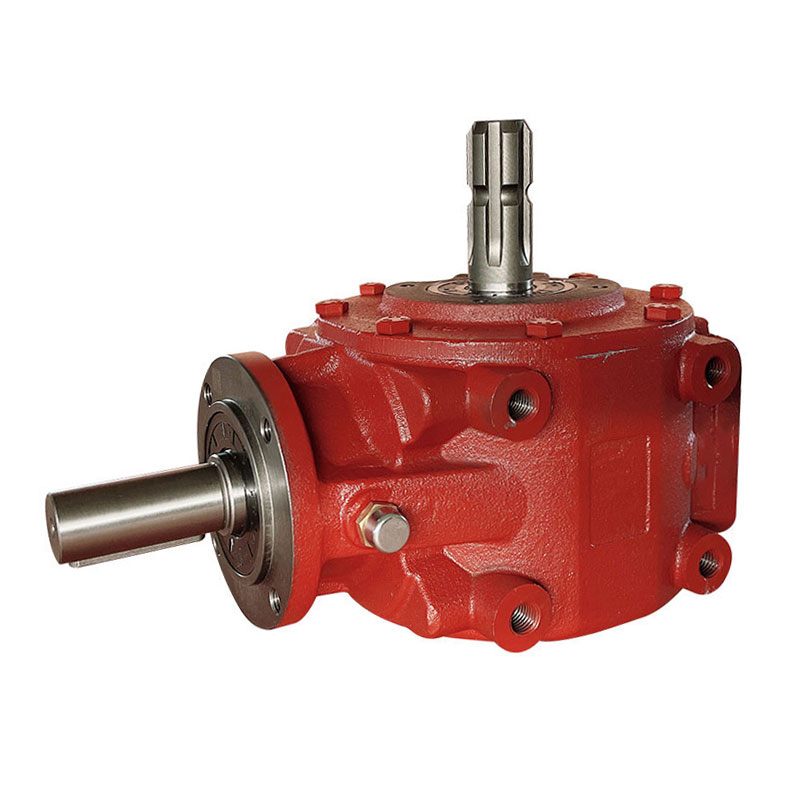Agriculture Gearboxes: Enhancing Efficiency and Sustainability in Modern Farming
2025-04-23
Agriculture gearboxes are crucial components in modern farming machinery, ensuring that agricultural equipment operates efficiently and reliably. These devices play a key role in transferring power from the engine or motor to the various parts of the machine, allowing for smooth and precise operation in tasks such as plowing, tilling, harvesting, and irrigation. Designed to withstand the demanding conditions of agricultural environments, these gearboxes are built to endure harsh weather, heavy loads, and prolonged use, all while ensuring optimal performance.
The importance of agriculture gearboxes cannot be overstated, as they are responsible for converting rotational energy into the appropriate force and speed required by different agricultural tools. For example, a gearbox might reduce the speed of the motor's rotation to match the specific needs of a tractor’s attachment, whether it's a plow, a harrow, or a mower. In doing so, the gearbox helps maintain consistent operation and prevents damage to both the machinery and the crop.
One of the most notable features of agricultural gearboxes is their versatility. These gearboxes come in various types, including bevel, helical, and worm gear designs, each suited for specific applications. Bevel gearboxes, for example, are often used when a change in direction of movement is required, such as when driving an auger or a conveyor system. Helical gearboxes are popular in applications requiring quiet operation and high efficiency, making them ideal for larger machines used in tilling or planting. Worm gearboxes, known for their compact design and high torque output, are typically used in irrigation systems and other low-speed, high-torque applications.
In addition to their functional versatility, agriculture gearboxes are designed with durability in mind. The agricultural sector often involves heavy-duty machinery that operates in tough environments, such as muddy fields, dusty conditions, or extreme temperatures. Gearboxes must therefore be able to handle these elements without failure. High-quality materials, such as steel alloys and cast iron, are commonly used in their construction to ensure strength and longevity. Furthermore, many agricultural gearboxes are sealed to protect against dust, dirt, and moisture, which could otherwise cause premature wear and tear.
Regular maintenance of agricultural gearboxes is essential to keeping equipment running smoothly and extending its service life. Routine checks and oil changes are necessary to ensure that the gearbox operates efficiently and that the internal components are properly lubricated. Inadequate lubrication can lead to excessive wear, overheating, and even failure of the gearbox, which can result in costly repairs and downtime during critical farming periods. Farmers and agricultural businesses must ensure that their gearboxes are serviced regularly, either through in-house maintenance or by working with professional technicians.
The evolution of agricultural gearboxes has been closely linked to advancements in farming technology. As machinery has become more sophisticated, gearboxes have had to adapt to meet new demands. The development of more efficient, quieter, and compact gearboxes has contributed to the increased productivity and performance of modern agricultural machines. Furthermore, innovations such as electronically controlled gearboxes have begun to make their way into the industry, offering even greater precision and control, which can be crucial for tasks like planting and harvesting.
In addition to improving the efficiency of agricultural machinery, gearboxes are integral to the sustainability of farming operations. By ensuring that equipment runs efficiently and reliably, gearboxes help reduce energy consumption, lower maintenance costs, and minimize downtime. Moreover, with an increasing focus on sustainable agriculture, manufacturers are continuously working on designing gearboxes that minimize environmental impact, whether through reducing fuel consumption, improving recyclability, or enhancing durability to prolong the equipment's lifespan.
The demand for high-quality agriculture gearboxes is growing, driven by the expansion of large-scale farming operations, the need for more efficient machinery, and the desire for more sustainable agricultural practices. As farming becomes more mechanized and automated, the role of agriculture gearboxes will continue to be a critical component in ensuring that agricultural equipment performs at its best. With ongoing advancements in technology and materials, agriculture gearboxes will continue to evolve, helping farmers to meet the challenges of modern-day agriculture while improving their productivity and sustainability.



